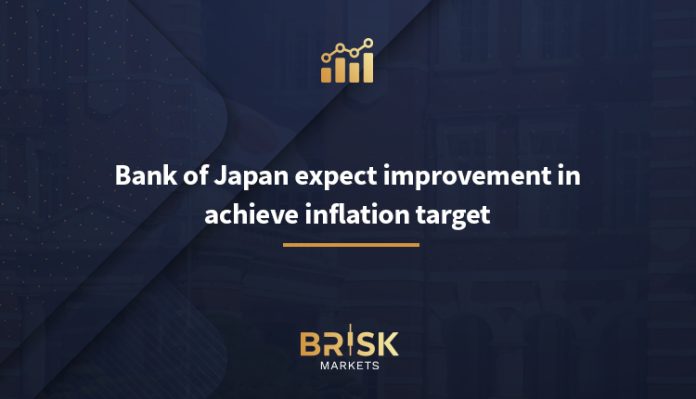The prospects of the world’s third-largest economy sustaining the 2% inflation target are gradually rising, the Bank of Japan said at its meeting, after the central bank expectedly maintained its ultra-loose monetary policy at its first meeting of the year.
The Bank of Japan unanimously decided to keep interest rates at -0.1% and stuck to the yield curve control policy that keeps the upper limit for Japan’s 10-year government bond yield at 1% for reference, according to a policy statement issued Tuesday after the Bank of Japan meeting. Two-day meeting. This came in line with economists’ expectations. Governor Kazuo Ueda said at a press conference in Tokyo, “We were able to confirm that the economy is moving in line with our expectations on inflation.
Our core inflation forecast is 1.9%, which is very close to our 2% target. This was the case in October, but it happened again this time, after careful scrutiny.
The Bank of Japan defines “core inflation” as inflation that excludes growth in food and energy prices, while core inflation is inflation that excludes only food prices. .
This is the biggest factor that has made us more convinced than ever that the likelihood of (achieving our price target sustainably) is gradually increasing.” But it’s hard to say how close we are.
The yen rose 0.7 percent to 147.4 yen against the dollar and the benchmark Nikkei 225 index closed down 0.1 percent after briefly approaching three-decade highs. Yields on Japanese government bonds for 10 and 30 years rose, while yields on shorter-term bonds fell. .
Bank of Japan inflation expectations eases to 2.4% due to lower oil prices
Bank of Japan board members cut their average core consumer price growth forecast to 2.4% for fiscal 2024 starting in April, compared to 2.8% in their October estimate, due to lower oil prices..
The central bank also marginally increased its core CPI inflation estimate for fiscal 2025 to 1.8% from 1.7% in the previous forecast. The Bank of Japan stuck to its previous mid-year forecast for fiscal 2024 and 2025 for so-called “core core inflation” at 1.9.%.
CPI core inflation is expected to gradually rise towards the price stabilization target, as the production gap turns positive and with rising medium- and long-term inflation expectations and wage growth.Although there are still significant doubts about future developments
Japan’s core consumer price index slowed to 2.3% in December, easing pressure on the Bank of Japan to normalize policy – although this reading remained above the Bank of Japan’s stated target of 2% for 21 consecutive months so far.
“It is true that the recent movement in the prices of services is clearly driven by several one-off factors. It is also true that weak consumption affects the prices of services. “That’s why we’re trying to extrapolate the trend that eliminates such factors,” Oeda said.
“When we do, we still believe that services inflation is gradually accelerating as a trend. He added that the next focus will be whether wage increases extend to prices, especially those for services.
Whether the Bank of Japan moves in March or April or the Fed changes, interest rates are going in the opposite direction in Japan and the US. This means that the USD/JPY is likely to fall to 140 or below as we reach the summer.”
Bank of Japan faces pressure to raise interest rates in April as inflation outlook improves
The reasons for the Bank of Japan to raise interest rates are growing at its April meeting, as investors tighten their focus on the outcome of spring wage negotiations, according to strategists.
The yen rose as much as 0.8% against the dollar and Japanese bond futures fell after Bank of Japan Governor Kazuo Ueda told a news conference that certainty about the outlook was gradually rising and that he would consider ending negative interest rates if the price target emerged. .
The decision to keep interest rates and control the yield curve unchanged on Tuesday was in line with economists’ expectations for the current situation, following a powerful earthquake that struck Japan on New Year’s Day and Yoda’s dovish comments at the end of December.
After the press conference
The change in Uwaida’s tone is clear, and keeps the April meeting live. However, the Japanese yen is likely to struggle to sustain these gains in the near term given that US bond yields are likely to remain volatile as markets begin to price the Trump presidency and US economic data remains strong.
“So far, Uida’s pressure has been clearly tighter than the forecast report itself and gives the impression that the Bank of Japan is approaching the victory call to meet the 2% inflation target and the end of negative interest rates. It is only natural for the Japan/FX markets to take this message seriously, and for Japan/JPY bond yields to rise further in the evening session. The market should see that the chance of an April rate hike is now above 50%.
“Bank of Japan Governor Kazuo Ueda’s remarks seem to indicate that the bank is one step closer to canceling the negative interest rate in the near future.




